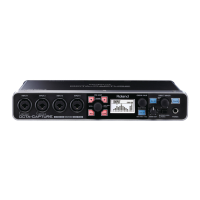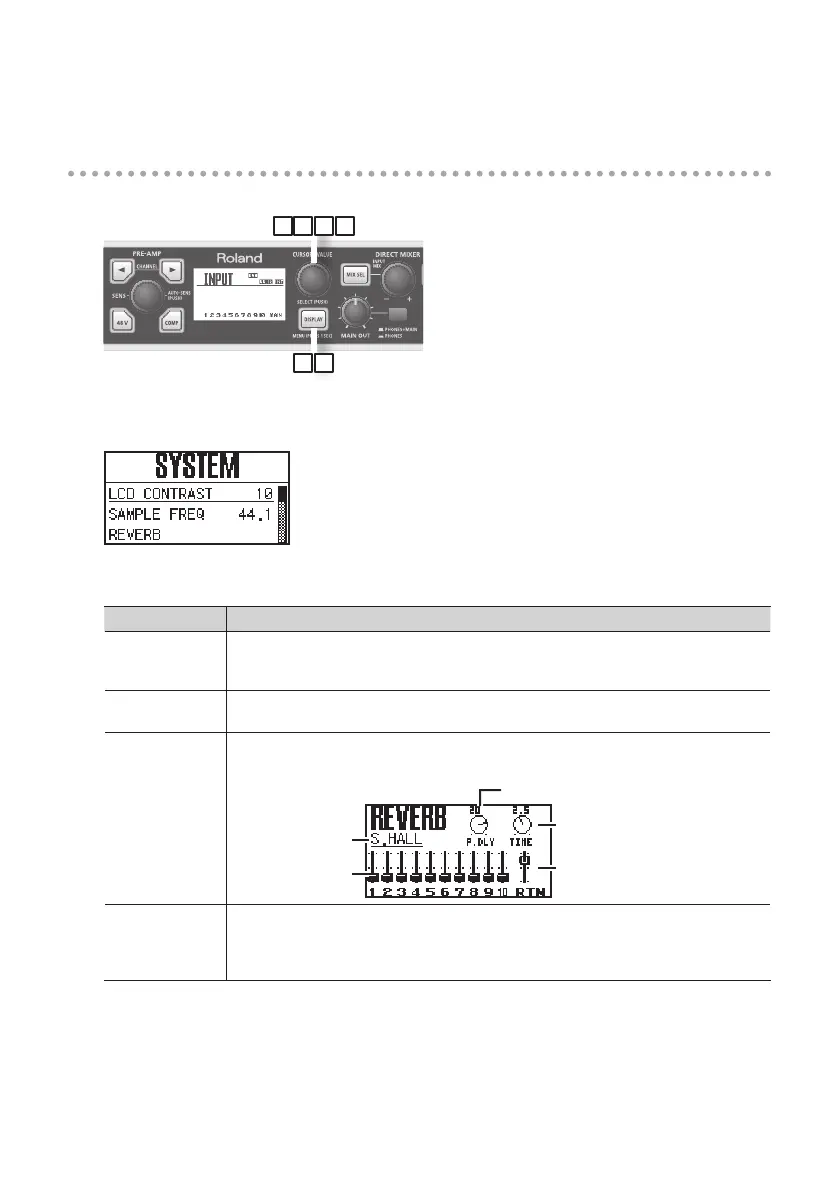
 Loading...
Loading...
Do you have a question about the Roland Octa-Capture and is the answer not in the manual?
| number of audio record channels (44.1/48/96 kHz) | 12 channels |
|---|---|
| number of audio playback channels (44.1/48/96 kHz) | 10 channels |
| number of audio record channels (192 kHz) | 4 channels |
| number of audio playback channels (192 kHz) | 4 channels |
| pc interface bit depth | 24-bit |
|---|---|
| ad/da conversion bit depth | 24-bit |
| internal processing bit depth | 40-bit |
| ad/da conversion sampling frequency | 44.1/48/96/192 kHz |
|---|---|
| digital (in/out) sampling frequency | 44.1/48/96 kHz |
| nominal input level (input jack 1-6, xlr type) | -56 to -6 dBu |
|---|---|
| nominal input level (input jack 7-8, xlr type) | -50 to +0 dBu |
| nominal input level (input jack 1-8, 1/4-inch trs phone type) | -46 to +4 dBu |
| nominal output level (output 1-8) | +0 dBu (balanced) |
| headroom | 16 dB |
| input impedance (input jack 1-6, xlr type) | 5 k ohms (balanced) |
|---|---|
| input impedance (input jack 7-8, xlr type) | 10 k ohms (balanced) |
| input impedance (input jack 1-8, 1/4-inch trs phone type) | 17 k ohms (balanced) |
| output impedance (output 1-8) | 1.8 k ohms (balanced) |
| output impedance (phones) | 47 ohms |
| frequency response (192 kHz) | 20 Hz to 90 kHz (+0/-8 dB) |
|---|---|
| frequency response (96 kHz) | 20 Hz to 40 kHz (+0/-2 dB) |
| frequency response (48 kHz) | 20 Hz to 22 kHz (+0/-2 dB) |
| frequency response (44.1 kHz) | 20 Hz to 20 kHz (+0/-2 dB) |
| residual noise level | -87 dBu typ. (GAIN: min., 600 ohms terminated, IHF-A) |
| dynamic range (ad block input 1-8) | 104 dB typ. (GAIN: min.) |
|---|---|
| dynamic range (da block output 1-8) | 113 dB typ. |
| display | 128 x 64 dots Graphic LCD (backlit LCD) |
| input jacks (xlr type / 1/4-inch trs phone type) | XLR type (balanced/phantom power +48 V), 1/4-inch TRS phone type (balanced) |
|---|---|
| coaxial input connector | present |
| coaxial output connector | present |
| headphone jack | Stereo 1/4-inch phone type |
| output jack (1/4-inch trs phone type) | balanced |
| midi connectors | In, Out |
| usb connector | present |
| power supply | DC 9 V (AC adaptor) |
|---|---|
| current draw | 1.45 A |
| dimensions | 283.8 (W) x 157.9 (D) x 50.4 (H) mm / 11-3/16 (W) x 6-1/4 (D) x 2 (H) inches |
| weight | 1.32 kg / 2 lbs 15 oz |